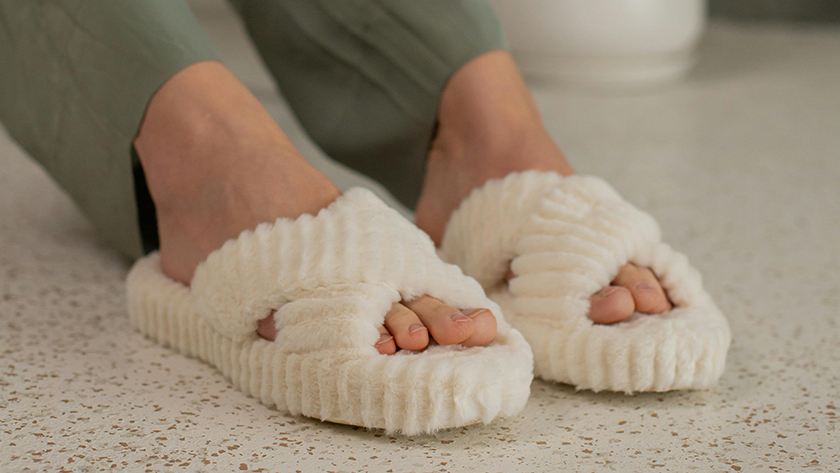
Wie sieht Nagelpilz aus und wie erkennt man ihn?
Nagelpilz, auch Onychomykose genannt, ist eine häufige Erkrankung, die sowohl Zehen- als auch Fingernägel befallen kann und zu Veränderungen des Aussehens, der Beschaffenheit und sogar des Geruchs der Nägel führt. Das frühzeitige Erkennen der Symptome einer Nagelpilzinfektion kann entscheidend dazu beitragen, die Erkrankung effektiv zu behandeln und zu bewältigen, bevor sie sich verschlimmert. Hier erfahren Sie, wie Sie Nagelpilzsymptome erkennen und wie sie aussehen.
Häufige Anzeichen einer Nagelpilzinfektion
-
Nagelverfärbung
- Eines der ersten Anzeichen einer Pilzinfektion ist eine Veränderung der Nagelfarbe. Der Nagel kann gelb, weiß, braun oder sogar schwarz werden. Im Frühstadium können kleine Flecken oder Streifen sichtbar sein, die sich im weiteren Verlauf der Infektion ausbreiten können.
- Verfärbungen sind normalerweise sichtbar und können dazu führen, dass Nägel schmutzig oder fleckig aussehen, auch wenn sie sauber sind.
-
Verdickte Nägel
- Pilzinfektionen führen häufig zu einer Verdickung der Nägel. Der betroffene Nagel kann deutlich dicker werden als gewöhnlich , wodurch er sich nur schwer schneiden lässt und leichter bricht.
- Besonders häufig kommt es zu Verdickungen bei Zehennägeln, die häufig Feuchtigkeit ausgesetzt sind, was ein ideales Umfeld für das Gedeihen von Pilzen schafft.
-
Verzerrte Nagelform
- Von Pilz befallene Nägel können ungleichmäßig, verzogen oder wellig wachsen. Sie bemerken möglicherweise ein wulstiges oder unregelmäßiges Wachstum , wodurch der Nagel sein glattes, natürliches Aussehen verliert.
- Diese Verformung kann auch unangenehm sein, wenn der Nagel dadurch in die Haut drückt.
-
Spröde oder krümelige Textur
- Infizierte Nägel werden oft brüchig oder brüchig , d. h., Teile des Nagels können leicht abbrechen. Es kann zu Abblättern, Splittern oder rauen Kanten am Nagel kommen.
- Diese bröckelnde Textur ist ein klares Anzeichen dafür, dass die Nagelstruktur durch die Infektion geschwächt wurde.
-
Nagelablösung vom Nagelbett
- In fortgeschrittenen Fällen kann sich der Nagel vom Nagelbett lösen , wodurch sich unter dem Nagel eine Lücke bildet. Diese Trennung verursacht oft einen unangenehmen Geruch und kann dazu führen, dass sich Bakterien in dem Zwischenraum ansammeln, was die Infektion verschlimmert.
- In fortgeschrittenen Fällen kann sich der Nagel vom Nagelbett lösen , wodurch sich unter dem Nagel eine Lücke bildet. Diese Trennung verursacht oft einen unangenehmen Geruch und kann dazu führen, dass sich Bakterien in dem Zwischenraum ansammeln, was die Infektion verschlimmert.
-
Schmerzen oder Empfindlichkeit
- Obwohl sie im Frühstadium einer Infektion nicht immer auftreten, können sich mit fortschreitender Infektion Schmerzen entwickeln, insbesondere wenn der Nagel dicker wird oder beginnt, in die Haut zu drücken.
Ursachen und Risikofaktoren für Nagelpilzinfektionen
Wenn Sie die Ursachen und Risikofaktoren für Nagelpilz kennen, können Sie diesen vorbeugen. Pilzinfektionen werden durch Pilze verursacht, die in feuchter und warmer Umgebung gedeihen. Zu den häufigsten Risikofaktoren gehören:
- Barfußlaufen an feuchten Orten wie öffentlichen Duschen, Schwimmbädern oder Umkleideräumen
- Enge oder nicht atmungsaktive Schuhe , die Feuchtigkeit einschließen
- Schlechte Nagelhygiene oder Traumata an den Nägeln
- Erkrankungen wie Diabetes, die das Immunsystem schwächen und die Anfälligkeit für Pilzinfektionen erhöhen
Wann sollte man einen Arzt aufsuchen?
Pilzinfektionen im Frühstadium scheinen zwar beherrschbar, können sich aber verschlimmern, wenn sie unbehandelt bleiben. Wenn Sie Symptome wie anhaltende Verfärbungen, Verdickungen oder Brüchigkeit der Nägel bemerken, sollten Sie einen Arzt aufsuchen. Ein Fachmann kann die Infektion genau diagnostizieren, oft durch Untersuchung des Nagels oder Entnahme einer kleinen Probe, um den spezifischen Pilz zu identifizieren.
Behandlungsmöglichkeiten für Nagelpilzinfektionen
Sobald eine Pilzinfektion diagnostiziert wurde, zeigt unsere Nagelpilzlösung innerhalb von 2–4 Wochen Wirkung. Mit ausschließlich natürlichen Inhaltsstoffen heilt sie die Infektion, ohne die Haut zu schädigen. In seltenen Fällen, insbesondere bei fortgeschrittenen Infektionen, kann ein Arzt eine Laserbehandlung oder die Entfernung des betroffenen Nagels empfehlen. Eine frühzeitige Diagnose und Behandlung kann die Ausbreitung der Infektion verhindern und zur Wiederherstellung der Nagelgesundheit beitragen.
Tipps zur Vorbeugung von Nagelpilzinfektionen
- Halten Sie Ihre Nägel sauber und trocken.
- Schneiden Sie die Nägel richtig, um Verletzungen zu vermeiden und das Eindringen von Bakterien zu verhindern.
- Tragen Sie atmungsaktive Schuhe und feuchtigkeitsableitende Socken, um die Feuchtigkeit um die Füße zu reduzieren.
- Vermeiden Sie es, an feuchten, öffentlichen Orten barfuß zu laufen.
- Desinfizieren Sie Nagelwerkzeuge regelmäßig, insbesondere wenn Sie sie mit anderen teilen.










